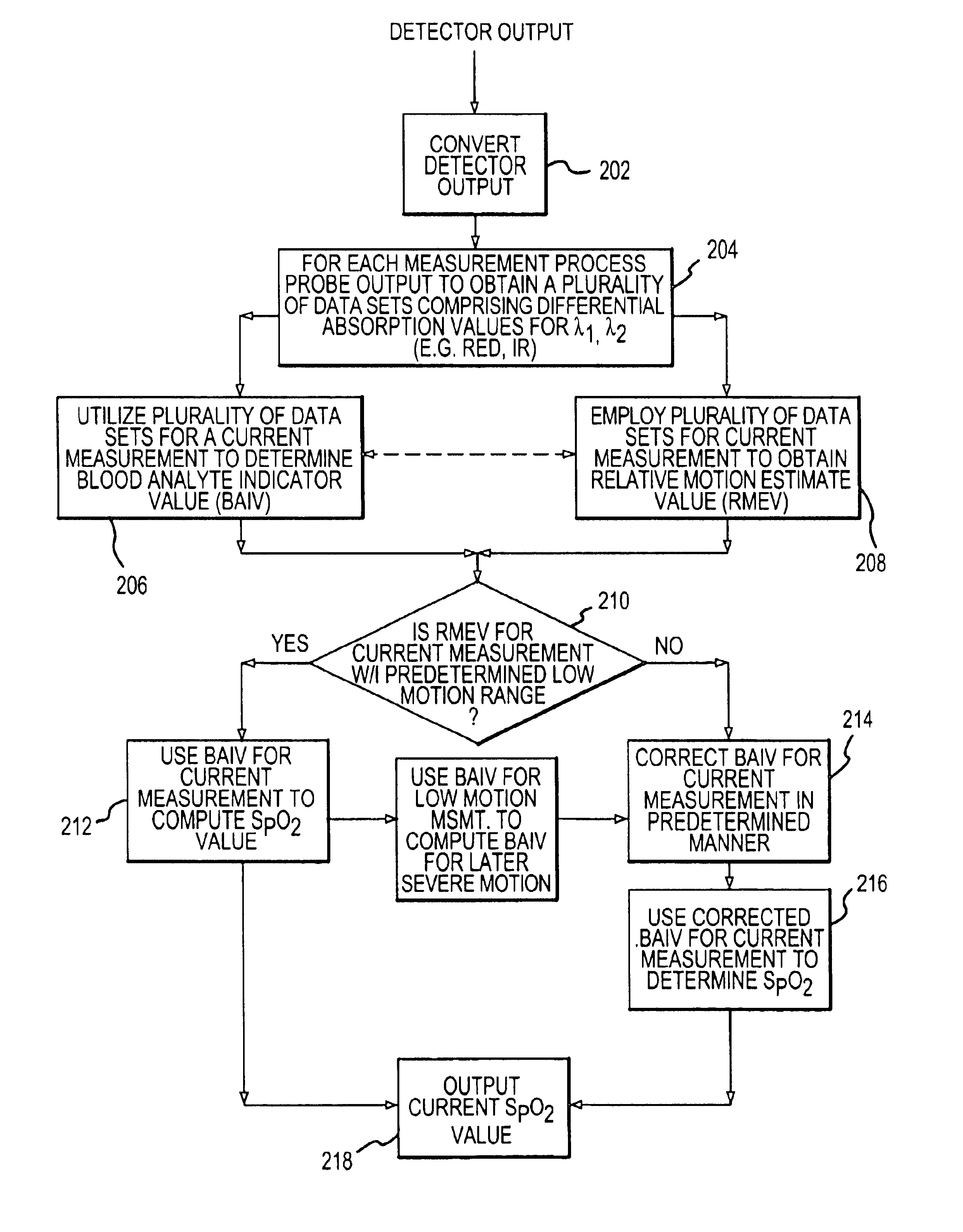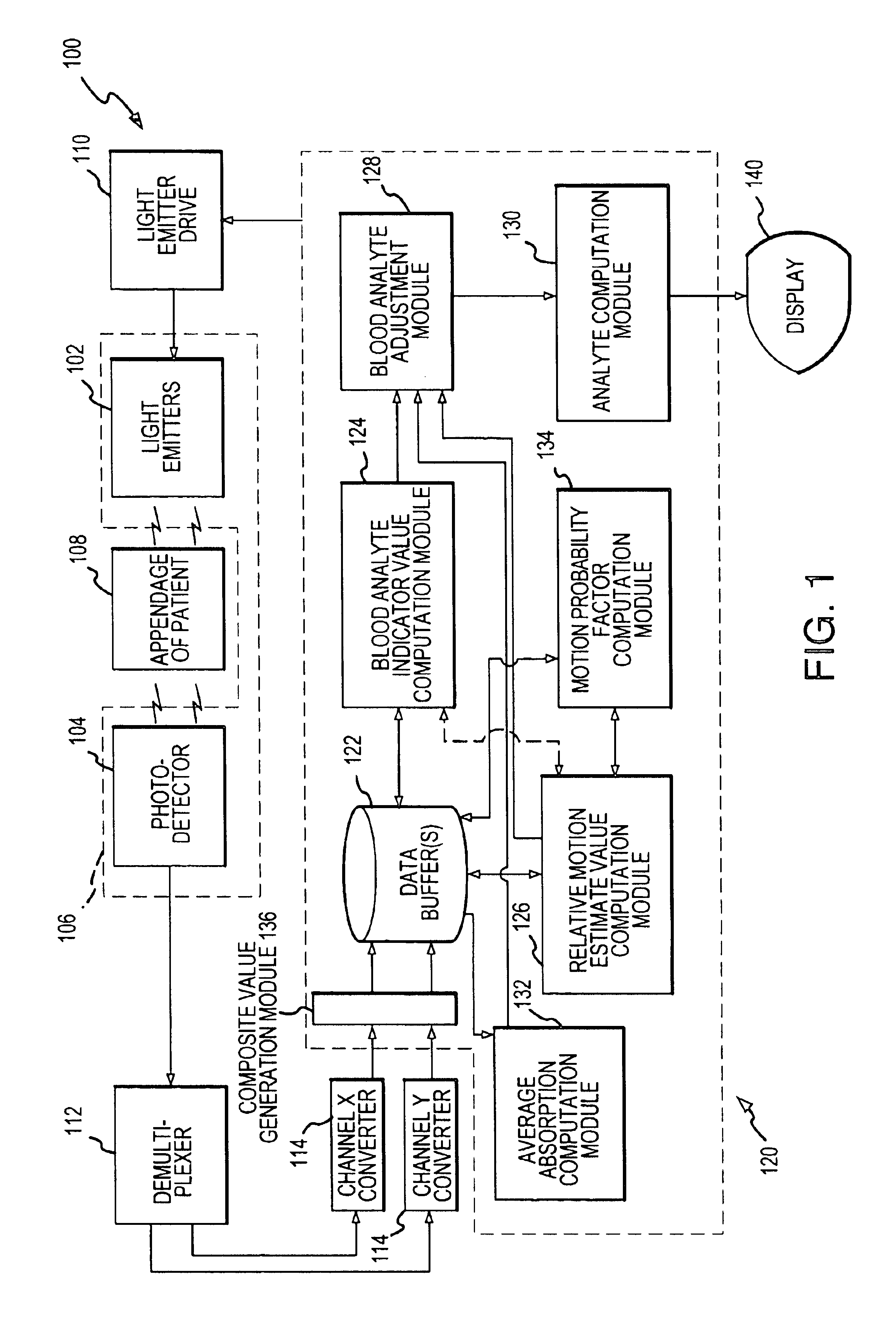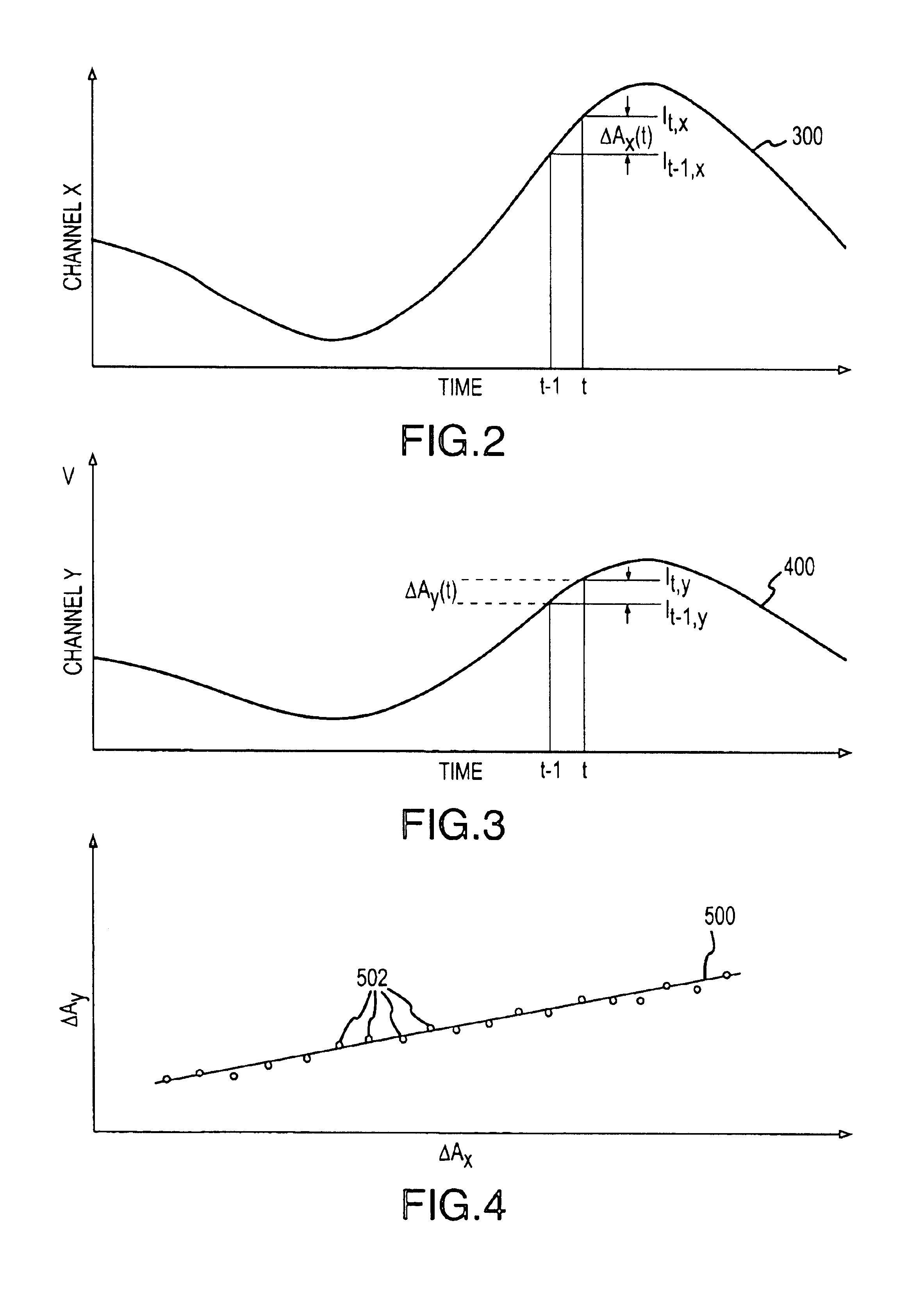Pulse oximetry method and system with improved motion correction
- Summary
- Abstract
- Description
- Claims
- Application Information
AI Technical Summary
Benefits of technology
Problems solved by technology
Method used
Image
Examples
Embodiment Construction
Referring to FIG. 1, a pulse oximeter system 100 according to one embodiment of the present invention is shown. Included in the system 100 are two light emitters 102 for radiating red light signals and infrared light signals and a photodetectors 104. By way of example, the light emitters 102 may be light emitting diodes (LEDs) or laser diodes.
The emitters 102 and photodetector(s) 104 may be incorporated into a probe 106 adapted for removable attachment to an appendage 100 of a patient, such as a finger, earlobe, nasal septum, or other tissue, during a monitoring procedure. In use, the probe 106 directs the light signals generated by the light emitters 102 onto one side of the appendage 100. Photodetector(s) 104 is positioned on the opposite side of the appendage 108 to monitor the intensity of light that is transmitted through the tissue and produce an output signal responsive thereto. As may be appreciated, the red and infrared emitters 102 may be driven by a drive 110 within inter...
PUM
 Login to View More
Login to View More Abstract
Description
Claims
Application Information
 Login to View More
Login to View More - R&D
- Intellectual Property
- Life Sciences
- Materials
- Tech Scout
- Unparalleled Data Quality
- Higher Quality Content
- 60% Fewer Hallucinations
Browse by: Latest US Patents, China's latest patents, Technical Efficacy Thesaurus, Application Domain, Technology Topic, Popular Technical Reports.
© 2025 PatSnap. All rights reserved.Legal|Privacy policy|Modern Slavery Act Transparency Statement|Sitemap|About US| Contact US: help@patsnap.com



